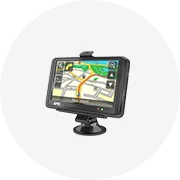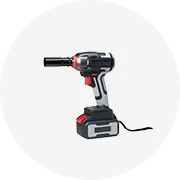Types of Speed Limiters
A speed limiter is a device used in vehicles to control the maximum speed of the vehicle. Speed limiters are commonly used in commercial vehicles, such as trucks and buses, to promote road safety and reduce the severity of accidents.
Key Benefit: Speed limiters can significantly reduce fuel consumption, minimize accident risks, and help drivers avoid speeding tickets by preventing vehicles from exceeding designated speed thresholds.
Electronic Speed Control
Uses the vehicle's electronic control unit (ECU) to limit speed by monitoring wheel speed sensors and communicating with engine and transmission control units.
Main feature: When approaching preset speed limit, it reduces engine power or restricts acceleration.
Common in: Modern vehicles with advanced electronic systems
Fuel Cut Speed Limiter
Restricts the amount of fuel delivered to the engine when the vehicle reaches the speed limit, causing a reduction in engine power.
Main feature: Automatically cuts fuel supply at predetermined speeds
Common in: Commercial vehicles, especially trucks and buses
Throttle Control Speed Limiter
Limits the vehicle's throttle opening, restricting acceleration and maximum speed when approaching preset limits.
Main feature: Directly controls acceleration potential
Common in: Educational or training vehicles used by learners
Transmission Control Speed Limiter
Interacts with the vehicle's transmission system to restrict gear shifting or change transmission ratios when nearing specified speed limits.
Main feature: Manages speed through transmission control
Common in: Off-road vehicles navigating challenging terrain
GPS-based Speed Limiter
Uses Global Positioning System technology to monitor the vehicle's location and speed in real-time, with predefined limits for specific roads or areas.
Main feature: Location-specific speed limiting
Common in: Fleet vehicles and regions with frequent speed limit changes
| Limiter Type | Control Method | Best Application | Complexity to Remove |
|---|---|---|---|
| Electronic Speed Control | ECU programming | Modern passenger vehicles | Moderate |
| Fuel Cut Speed Limiter | Fuel delivery | Commercial transport | Moderate to High |
| Throttle Control | Mechanical/electronic throttle | Training vehicles | Low to Moderate |
| Transmission Control | Gear shifting patterns | Off-road vehicles | High |
| GPS-based | Location tracking | Fleet management | High |
Specifications and Maintenance of Speed Limiter Removal
Legal Warning: Speed limiter removal may be illegal in many jurisdictions, especially for commercial vehicles. Always check local regulations before considering removal.
Speed Limiter Removal Legality
The legality of removing speed limiters varies significantly by location and vehicle type:
- Commercial vehicles typically have strict regulations prohibiting limiter removal
- Passenger vehicles may have more relaxed rules in some jurisdictions
- Racing vehicles used exclusively on closed tracks may have exemptions
Professional vs. DIY Removal
Professional Removal:
- Performed by qualified mechanics or tuning specialists
- Higher safety standards and reliability
- Often includes performance optimization
- More expensive but reduces risk of vehicle damage
DIY Removal:
- Uses software tools or ECU modification
- Lower cost but higher risk
- Requires technical knowledge
- May cause engine damage if done incorrectly
Warranty Implications
Removing a speed limiter typically has significant warranty implications:
- Most manufacturers explicitly void warranty for modified ECUs
- Damage related to exceeding design speeds isn't covered
- Even unrelated repairs may be denied if modification is discovered
- Some aftermarket companies offer limited warranties on their modifications
Performance Impact
Potential Benefits:
- Increased top speed capability
- Improved acceleration at higher speeds
- Removal of artificial power restrictions
Potential Drawbacks:
- Increased engine wear and heat
- Reduced vehicle stability at high speeds
- Braking system limitations at higher speeds
- Decreased fuel efficiency
How to Choose Speed Limiter Removal Services
If you've determined that speed limiter removal is legal and appropriate for your vehicle, selecting the right service provider is crucial for safety and performance.
| Selection Factor | Importance | What to Look For |
|---|---|---|
| Reputation | Critical | Verified reviews, testimonials, industry standing |
| Experience | High | Years in business, experience with your specific vehicle model |
| Cost | Medium | Competitive pricing, transparent quotes, no hidden fees |
| Warranty/Guarantee | High | Written guarantee of work, follow-up service options |
| Convenience | Low to Medium | Location, turnaround time, mobile service availability |
Expert Advice: When selecting a speed limiter removal service, prioritize providers who conduct a thorough assessment of your vehicle's capability to safely operate at higher speeds and who recommend additional modifications when necessary (such as brake upgrades for vehicles that will be driven significantly faster).
Key Considerations When Choosing a Service Provider
- Verify reputation through multiple independent sources and check for manufacturer certification when possible
- Ask about experience with your specific vehicle make, model, and year to ensure familiarity with your ECU type
- Compare quotes from multiple providers, but be wary of prices that seem too good to be true
- Inquire about warranty coverage and what happens if problems arise after modification
- Consider convenience factors like location, scheduling flexibility, and estimated completion time
How to Remove Speed Limiter
Important Warning: Speed limiter removal is illegal in many jurisdictions and may void vehicle warranties. This information is provided for educational purposes only. Always consult local laws and vehicle manufacturer guidelines before making any modifications.
There are three primary methods used to remove speed limiters from vehicles. Each method has different complexity levels, costs, and potential impacts on vehicle performance and safety.
Speed Limiter Defeat Device
These plug-and-play devices connect to the vehicle's OBD port and manipulate the data being sent to the ECU.
How it works: The device intercepts and modifies signals from speed sensors, sending incorrect information to the ECU to prevent speed limitation activation.
Installation difficulty: Low (usually 5-15 minutes)
Detectability: Medium (can be removed before service visits)
Typical cost range: $50-$300 depending on vehicle and device quality
ECU Remapping/Tuning
This process involves modifying the software instructions in the vehicle's ECU to adjust or remove the speed limitation parameters.
How it works: A specialist connects to the ECU through the OBD port or directly to the ECU itself, then uploads modified firmware with adjusted parameters.
Installation difficulty: High (requires specialized equipment and expertise)
Detectability: Medium to High (can be detected during diagnostic scans)
Typical cost range: $200-$800 depending on vehicle complexity
ECU Replacement
This method involves physically replacing the factory ECU with an aftermarket or modified unit that doesn't include speed limitation programming.
How it works: The vehicle's original ECU is removed and a compatible aftermarket unit with custom programming is installed in its place.
Installation difficulty: Very High (requires extensive technical knowledge)
Detectability: High (immediately apparent during inspection)
Typical cost range: $500-$2000+ depending on vehicle and ECU quality
Professional Recommendation: If determined to proceed with speed limiter removal, ECU remapping by qualified professionals is typically the safest option. The process can be tailored to your specific vehicle's capabilities and includes safety parameters based on your vehicle's mechanical limitations.
Frequently Asked Questions
The legality of speed limiter removal varies significantly by jurisdiction:
- Commercial vehicles: In most countries, removing speed limiters from commercial vehicles (trucks, buses, taxis) is strictly illegal and subject to heavy fines.
- Passenger vehicles: Regulations vary widely. In some regions, modifications that contravene traffic safety laws or vehicle compliance standards are illegal.
- Racing vehicles: Vehicles used exclusively on closed tracks may have different regulations.
Additionally, speed limiter removal may void warranties and potentially violate leasing agreements. Always consult local transportation authorities for specific regulations in your area.
Speed limiter removal has several performance implications:
- Top speed: The most obvious effect is an increased maximum speed capability.
- Acceleration: Removal typically doesn't improve acceleration below the original limited speed, but allows continued acceleration beyond that point.
- Vehicle stability: Many vehicles aren't designed for operation above their limited speeds, which may lead to stability issues.
- Component stress: Higher speeds increase stress on engine, transmission, and drivetrain components.
- Safety systems: Anti-lock braking and stability control systems may not be calibrated for operation at higher speeds.
Yes, removing the speed limiter typically voids aspects of a vehicle's warranty:
- Manufacturer policy: Most manufacturers explicitly state that unauthorized modifications to vehicle software or hardware void warranty coverage.
- Magnuson-Moss Warranty Act: In the US, manufacturers must prove that a modification caused a specific failure to deny warranty coverage for that component.
- Diagnostic detection: Modern vehicles record modification attempts in their diagnostic systems, making it difficult to hide modifications during service visits.
- Partial coverage: Some unrelated components may still be covered, but any damage potentially related to operating beyond design speeds will likely be excluded.
Speed limiter removal itself doesn't directly change fuel efficiency, but the resulting driving behavior often does:
- Aerodynamic drag: Increases exponentially with speed, significantly reducing fuel economy at higher speeds.
- Engine operation: Most engines operate less efficiently near their maximum RPM range.
- Driving habits: Vehicles with removed limiters tend to be driven more aggressively, further reducing fuel economy.
- Engine tuning: If the limiter removal was part of a comprehensive tune, fuel efficiency might actually improve in some driving conditions if the tune was designed for efficiency.
Studies show that driving at speeds above 80 mph can reduce fuel economy by 10-30% compared to driving at 65-70 mph.
In most cases, speed limiters can be reinstalled after removal:
- ECU remapping: If the limiter was removed via software, the original factory settings can typically be restored.
- Defeat devices: Simply removing the device restores original functionality.
- Replacement ECUs: The original ECU can be reinstalled if it was preserved.
- Manufacturer assistance: Authorized dealers can usually reflash the ECU with original programming, though they may charge a fee and might note the prior modification in your service record.
For warranty reinstatement or compliance certification, it's recommended to have an authorized dealer perform the reinstallation and document the vehicle's return to factory specifications.
























































